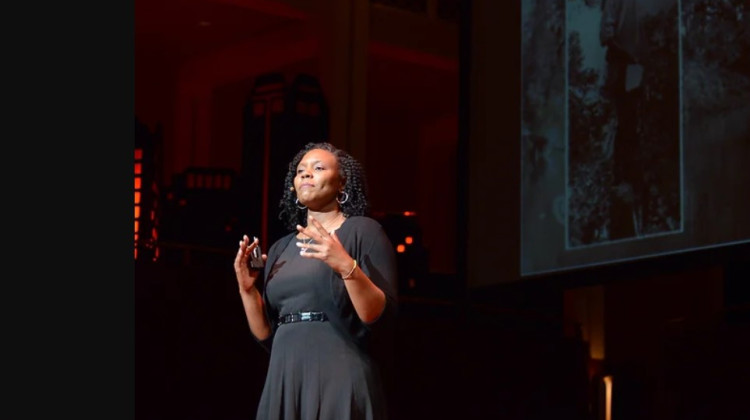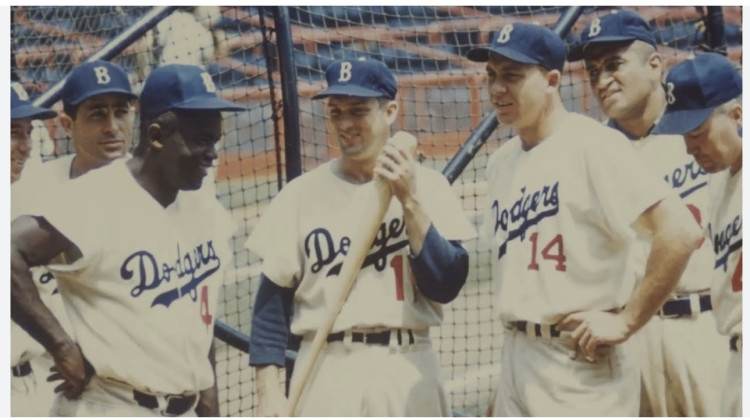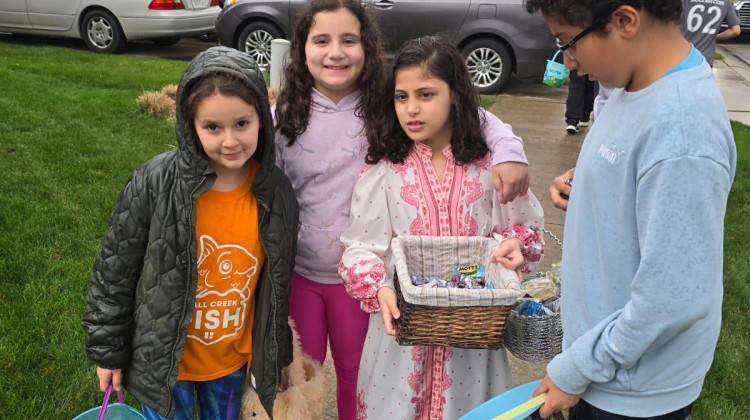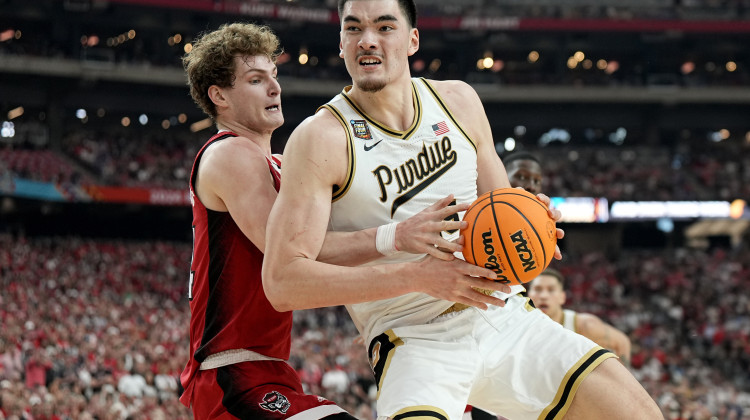This weekend is the third edition of the BUTTER art fair in Indianapolis. It showcases the work of Black and Brown artists. One of the featured artists uses many canvases, including one that you usually associate with comfort. But LaShawnda Crowe Storm uses it to make people think hard about this country’s uncomfortable history. She spoke recently to WFYI’s Ray Steele in our studios.
LASHAWNDA CROWE STORM: Thank you for inviting me.
RAY STEELE: You’re a multimedia artist. But the quilts do fascinate me. Where did that come from?
STORM: I came to textiles and quilting because I was working on a project about the history of lynching and women. And was really, I guess, I consider myself a themeicist in the sense that the medium should really also help the discussion about the thematic topic that you're exploring. That becomes a part of how you tell the story through the work. And so, in exploring the history of racial violence in the US and connection to women. It took about two years as I kept just inquiring about that daily. So how do we create space for the community to come to the table? How do we talk about these histories? And what are art forms that are tied to women and when we think or belong to “women”, and eventually, we got to, oh, it should be a quilt.
STEELE: “The Lynch Quite Project” (displayed several years ago at the Indianapolis Public Library) did strike a nerve with a lot of people because of the subject matter, because it was graphic. But it told the truth about the past, and it made a lot of people uncomfortable to look at the images that you created.
STORM: So, for some people it struck a nerve with them, and they were uncomfortable. And my response is, then you need to sit at the intersection of why you're uncomfortable. Because that's your thing to carry. Some people were very thankful that here was a space… that they had carried these hard histories because they had lived them. And we're not given space to talk about it. So, when we think about some of the things happening to try to erase these histories and things, we don't get to erase that. We get to embrace it. And we get to pull up a seat at the table - and I have quilts going around like that - and figure out how do we ensure this does not become our future? Because it can.
STEELE: Now, you're also going to be at BUTTER 3 at the Stutz this weekend.
STORM: But, the quilt there is not about lynching. I have a 426 foot quilt…
STEELE: Oh, this is the Redlining quilt! I was going to ask about it. Redlining, of course, the practice that started many years ago with banks, financial institutions, literally drawing red lines on maps where the “undesirable” neighborhoods were, which were mostly Black neighborhoods, financially locking them out of generational wealth. You've transferred that to a quilt, but you made the quilt really long, as you said, 426 feet, but it's also really narrow. What’s behind the shape of the quilt?
STORM: Well, the quilt came out of a public action project that was at Newfields. And it was a meal done with artist Seitu Jones called “At the Crossroads”, and part of that discussion, which was around food insecurity, because Indiana, Indianapolis in particular, is always in the tops in the country, what became was that Seitu does big community dinners to try to bring people together. So, the quilt was created first as a huge table runner. And it does have Indianapolis’s historical redlining map sewn into it. And so, he was like, but this is how big the table is. And I was like, well, let me go get my army of community quilters that I've worked with, and see if we're down for the challenge because we I think we had like five or six months, and we were down for the challenge. And we figured out how to do it. And that's one of the reasons why it's so long, but it's longer than what was requested, primarily because once you start sewing or just like we just got to keep going -- we got to keep sewing to make sure we hit the size.
STEELE: LaShawnda, thanks for stopping by. I appreciate it.
STORM: Thank you.
LaShawnda Crowe Storm is among the artists at the BUTTER 3 Art Fair this weekend at The Stutz in Indianapolis. Information is available at butterartfair.com, and you can find information about Michelle and his other work at LaShawndaCroweStorm.com.
 DONATE
DONATE









 View More Programs
View More Programs

 Support WFYI. We can't do it without you.
Support WFYI. We can't do it without you.